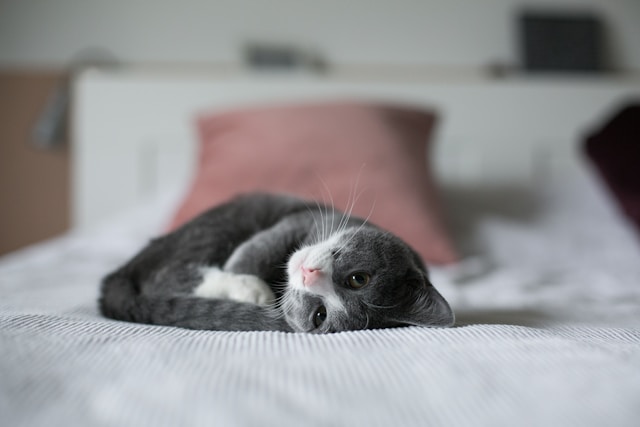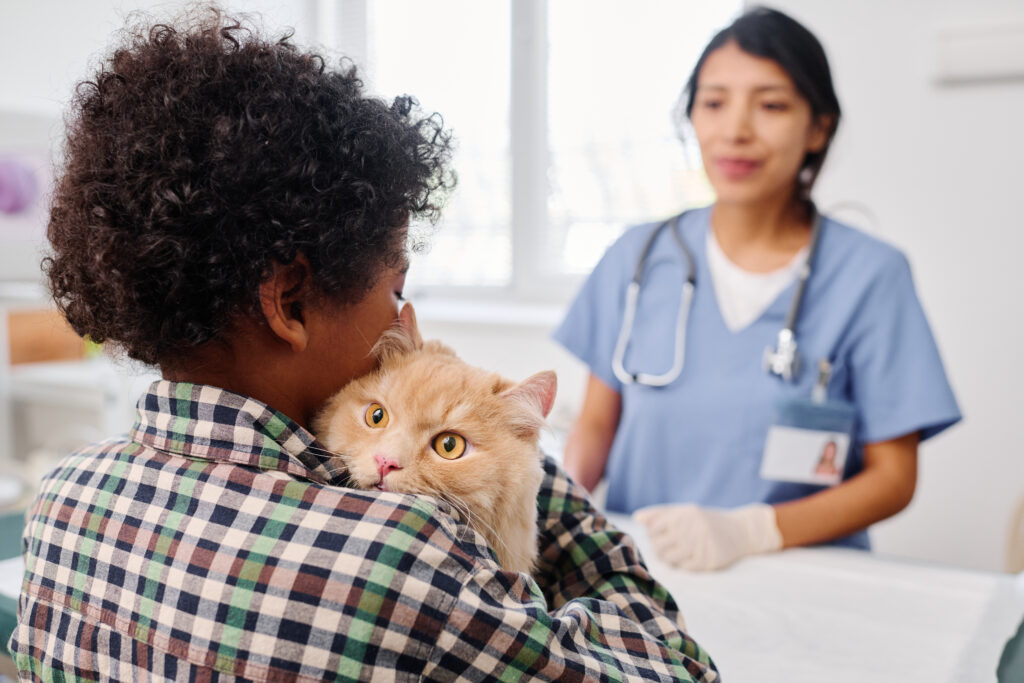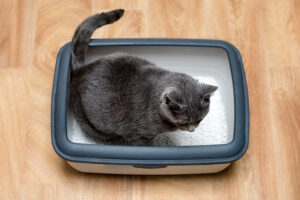Seeing blood in your cat’s urine can be quite disturbing. You might worry it’s something fatal, but it doesn’t have to be. Blood in urine, called hematuria, can happen because of health issues in cats. These health issues may be mild or severe. Regardless, if you notice blood in your cat’s urine, get them to the vet right away.
In this post, we’ll show you the symptoms, causes, and treatments for bloody urine in your kitty.
Symptoms of Bloody Urine in Cats
Bloody urine in cats is usually caused by bladder and other health issues. Your cat will typically show other symptoms to indicate something is wrong.
One of the first signs is reddish or pinkish urine, which shows that blood is present. In some cases, this doesn’t happen. But there are other signs your cat may show, such as:
- Frequent urination
- Decreased urination
- Increased drinking
- Decreased drinking
- Crying in pain while urinating
- Urinating outside the litter box
- Bleeding from the nose, gums, ears, and other parts of the body
- Bloody vomit or feces
- Bruises on the skin
- Straining to urinate
- Inability to urinate (This is an emergency case. Call the vet right away.)

Common Causes of Blood in Cat Urine
- Feline Lower Tract Disease (FLTD): This is a disorder in your cat’s lower urinary tract. Usually, there’s no infection in the tract; it’s just irritated. This happens when your cat is stressed or reacting to a change in diet or weight.
- Urinary Tract Infection (UTI): This is when there is an infection in your cat’s bladder or urethra, leading to inflammation. Your cat will pee less, and you may see blood in its urine.
- Kidney or Bladder Stones: Your cat’s kidney or bladder may collect minerals in the form of stones from the urine. These can block urine flow and cause blood to appear in its urine.
- Blocked Urethra: This is when your cat’s urethra is blocked, and it cannot pass urine well or at all. This usually happens as a result of bladder stones, narrowing of the urethra, or even cancer. If your cat cannot pee, you need to take it to the vet right away, as it’s a medical emergency.
Other causes of bloody urine in cats are:
- Cancer of the bladder
- Diabetes
- Trauma from accidents
- Thyroid disease
- Sometimes, very young cats may have blood in their urine because their urinary tracts did not develop properly.
Diagnosis and Treatment of Bloody Urine in Cats
Your vet will perform a physical exam to diagnose hematuria in your cat. They’ll also collect your cat’s urine sample for analysis. This will help to identify blood, bacteria, crystals, or other abnormal cells in the urine.
Sometimes, a vet will run blood tests to check kidney function and other conditions that can cause urinary tract issues. Your cat may also need X-rays or ultrasound scans to view inside the urinary tract and find issues like stones, tumors, or other problems with your cat’s urinary system.
After proper diagnosis, treating blood in your cat’s urine depends on what’s causing it. If your cat has kidney or bladder stones, for example, your vet will either dissolve them with special food or do a surgery.
Your vet will prescribe antibiotics if your cat has a urinary tract infection. However, if your cat is dealing with FLTD, treatment will include stress management, medication for pain and anxiety, as well as litter box management.
If your cat has cancer, treatment may include chemotherapy, radiation, or surgery, depending on the type of cancer.

How to Care for a Cat With Bloody Urine at Home
Although you should take your cat to the vet if you suspect hematuria, you should support your vet’s treatment with some home care. The following are ways you can contribute to improving the general health of your kitty’s urinary tract:
- Provide Fresh Water: Ensure your cat has access to fresh, clean water at all times. Adequate hydration helps maintain their urinary tract health by flushing out toxins and diluting urine, reducing the risk of crystal or stone formation.
- Monitor Urination: Keep an eye on your cat’s litter box habits. Monitor how often they urinate, any straining or discomfort during urination, and the color of their urine. Also, note any changes or if you observe blood in the urine.
- Encourage Urinary Health Diets: Depending on your vet’s recommendations, feed your cat a balanced diet that supports urinary health. Your cat may need specialized prescription diets if they have a history of urinary issues or are prone to forming crystals or stones.
- Reduce Stress: Minimize stressors in your cat’s environment, as stress can contribute to urinary tract issues. Provide a calm and enriched environment with plenty of hiding spots, vertical space, and opportunities for play and mental stimulation.
- Maintain Litter Box Hygiene: Keep the litter box clean by scooping it regularly. Cats love cleanliness and may refuse to use a dirty box. Use unscented, clumping litter, which most cats prefer. Provide enough litter boxes if you have many cats. Ideally, have one litter box per cat plus one extra to prevent overcrowding and ensure it is always easy to access.
- Administer Medications as Prescribed: If your vet has prescribed medications like antibiotics or pain relievers for your cat, administer them as directed. Follow the dosage instructions carefully and complete the full course of treatment.
- Regular Vet Check-Ups: Schedule follow-up appointments with your vet as recommended. Regular check-ups allow your vet to monitor your cat’s urinary health, adjust treatment if needed, and detect any recurrence of hematuria or other urinary issues early.
- Observe Behavior and Activity Levels: Pay attention to your cat’s overall behavior and activity levels. Changes in behavior, such as low energy or hiding, could mean your cat is ill, and you should take them to the vet immediately.
Does Truffle Paws Cover Treatment of Bloody Urine in Cats?
Truffle Paws accident and illness plans typically cover the diagnosis and treatment of blood in cat urine (hematuria). We offer three main plans: Bronze, Silver, and Gold, each with different levels of coverage to suit your needs and budget.
However, some pre-existing conditions may not be covered. For details on what each plan covers and to understand what pre-existing conditions are covered, contact our customer care directly.
Get started today by joining the Truffle Paws family and give your cat the health and happiness they deserve.






